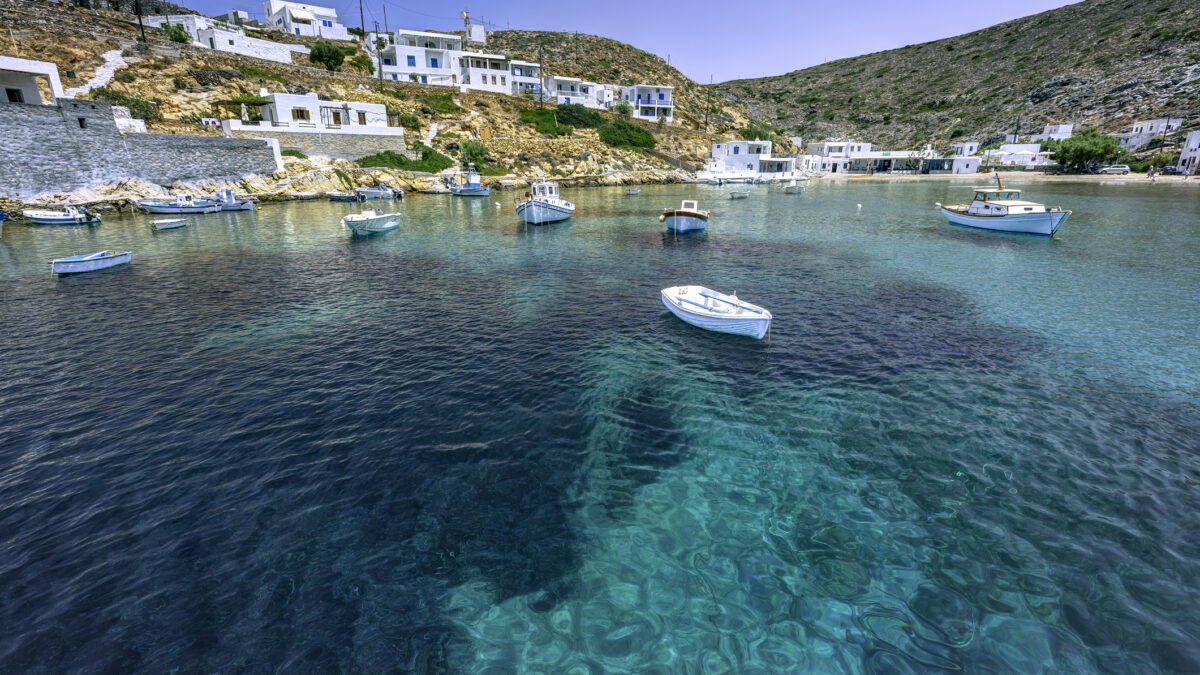In prehistoric times, Sifnos was known by the names ‘Akis’, ‘Meropia’ and ‘Meropi’. It took its current name later, from Sifnos, son of the mythical Attic hero Sounios. Steeped in history and tradition, ancient Sifnos was the site of gold and silver mines, thanks to which it amassed immense wealth. This prosperity is evident in the fact that the islanders minted their own coins as early as 600 B.C.
Today, Sifnos has maintained its time-honoured traditions in ceramics – it is considered the most prominent producer of ceramics in the Aegean – and pottery, with successive generations of artisans keeping the tradition alive. It is renowned for its architecture as well as its rich gastronomic culture, with one of its most distinguished natives, Nikolaos Tselementes – the founder of modern Greek cuisine – solidifying its reputation as a top culinary destination.
As for sights to see, Sifnos has three main towns, all of which have been listed as traditional settlements since 1962. The first of these, the island’s main settlement of Apollonia, was named after the god Apollo. It is known worldwide for its picturesque stone-paved alleyways and Cycladic architecture, as well as for the ‘steno’, meaning narrow in Greek, but don’t be fooled by the name: it is the town’s main and busiest street. The next settlement is Artemonas, a locale of striking beauty and a welcoming atmosphere with its neoclassical homes and winding alleyways. The last, Kastro, is a must-see destination. It is faithful to medieval architecture and has been continuously inhabited since prehistoric times. Visitors can take a stroll through its winding streets, feeling its historical ambience.
Known for their crystal-clear waters, the island’s beaches are sure to satisfy all visitors. Variety is the rule here, with rugged rocks, sandy stretches, organised affairs and free beaches available. Most renowned among the island’s beaches are Platys Gialos, picture-postcard Chrysopigi with its pretty chapel and rocks, the modest Vathy with its shallow waters, Chersonissos with a picturesque fishing village nearby, the ‘hidden’ Glyfos, and finally Kamares, a pristine blue-flag beach.
Cuisine
Products grown and produced on Sifnos stand out thanks to its loamy soil. Apart from its use in the island’s world-famous ceramics, this soil produces cereals, olive trees, fruits and vegetables of exceptional quality and distinctive flavour. In addition, the cheeses produced on Sifnos – the most famous of which is manoura, a pungent, irresistible wine-soaked cheese – are most certainly worth trying.
Nikolaos Tselementes, the man who defined 20th-century Greek cuisine, hailed from Sifnos. His cookbooks can be found in just about every Greek household. This alone would be enough to connect the island with cuisine and give it a major culinary tradition. It is worth noting that, in addition to Tselementes, other chefs have also contributed to Sifnos’ status as a culinary destination.
The island’s two most famous traditional recipes, both of which happen to be cooked in earthenware vessels, are mastelo – lamb seasoned with dill and slow cooked for hours in red wine – and chickpea stew. Both dishes are cooked in a wood-fired oven and are available at just about every restaurant on the island. Chickpea fritters (revithokeftedes) are another popular and beloved dish.
Anthotyro and the local honey are the primary ingredients in honey pie (melopita), an ode to the grandeur of top-quality ingredients. Also, visitors should not miss the opportunity to sample the island’s almond sweets.
The “Nikolaos Tselementes” Cycladic Gastronomy Festival is held each September on the island. During the festival, chefs from throughout the Cyclades prepare local dishes, giving visitors a prime opportunity to sample flavours from the region.
How to get there
Sifnos is located in the Western Cyclades, between Serifos and Kimolos, and is serviced by ferry from the ports of Piraeus and Rafina.










